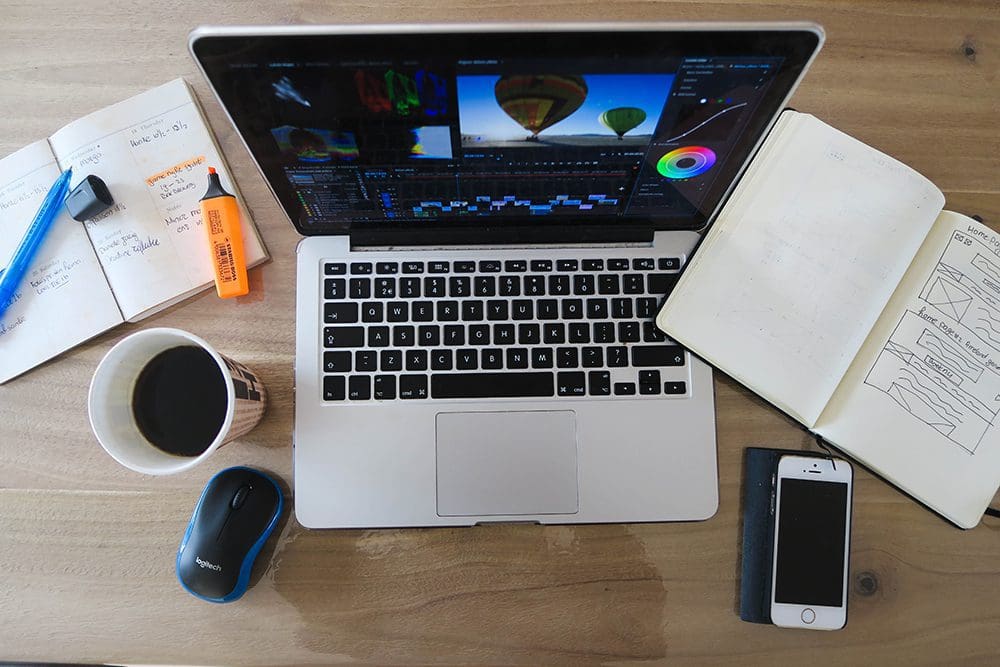A video is the most engaging way to build your brand. Therefore it is essential to do the research and understand how to maximise its reach online.
To start with you have to ask yourself the question. Are your videos engaging? Do they bring value or entertainment to your audience? If you create mind-numbing videos then no matter how much you promote or share them, they won’t get the views. So ensure you have a great idea or script, to begin with.
Understanding Social Media Platforms
Each of the five major social media platforms is different. They should all be treated that way, especially when it comes to video. No audience on YouTube, Instagram, Facebook, Twitter and Linkedin interact the same way. To maximise your reach through online video marketing, you must treat each platform differently.
We recommend creating your first video for YouTube as the first step. The reason for this is YouTube allows the most extended amount of time for a visual story. Once you have the video ready for YouTube cut and edit it to fit the limit set for each platform. Make sure you only include the essential points as 60 seconds is not a lot of time for some of the channels.

Length of Video for Each Social Platform
- Twitter – 60 seconds.
- Instagram – 60 seconds.
- Linkedin – 10 mins.
- Facebook – 45 mins.
- IGTV – 1 hour.
- YouTube – 12 hours.
So, with the timings set, let’s look at some of the social media platforms you are most likely to use. Once we understand the platform, we can then decipher how to maximise your reach online.
YouTube.
YouTube is by far the best platform to use. The platform is owned by Google, making it a valuable resource to increase your brand awareness through organic SEO. To give you an idea of the sort of influence YouTube has, if something is trending online, most likely it would have started with YouTubers making it popular.
YouTube is video. Unlike all other social platforms, once you have your channel verified, you can upload a video that’s 12 hours long. This time is far too much, so instead only upload the most valuable content. Your video should be no longer than 15 minutes. To maximise your reach on this channel ensure you do the following:
- Include a high quality, engaging thumbnail image for the video.
- Add a descriptive title.
- Write an informative description.
- Include relevant hashtags.
- Add appropriate links listed as info cards once you have uploaded the video.
Once you have everything ready, to maximise your reach, the best time to upload is about an hour after lunchtime on Thursday and Friday. You can also upload during the start of the week. However, most people will be checking emails during this time. Therefore late afternoon is the best option. If you are looking to engage with your audience on the weekend, then make sure to schedule your upload to publish in the late evening.
Facebook and Instagram.
Facebook has recently rolled out a new video tab that only shows you videos from your feed. For years the company has tried to beat its rival YouTube, but with limited success. The company now has three dedicated places to publish your video marketing material. IGTV (1 hour of content), Facebook Page Video (45 minutes of content) and Instagram (60 seconds of content).

Again, each one of these platforms is different. Some tips to maximise your online reach for video include:
Facebook.
- Upload high-quality full HD or 4K video content.
- Design a clean, simple thumbnail to cut through the mountains of posts.
- Your video should tell an excellent story.
- Include relevant tags.
- Include subtitles for more views.
- Be no longer than 4 minutes.
Instagram.
- Only include relevant content.
- Short and sharp is best.
- Upload video using your phone, not your desktop (i.e. via Sprout Social, Hootsuite etc.).
- Crop into a square format for best engagement.
- Include relevant hashtags and ‘@’ mention brands or collaborators to the post.

IGTV.
- Edit your footage into a vertical format (9:16).
- Craft a clear thumbnail image and upload it separately from the video.
- Include subtitles.
- Don’t exceed more than 10 minutes.
Regarding obtaining the highest engagement, the best times we have found to publish your Facebook and Instagram videos depend on the day of the week. During the week you should post your video in the late afternoon before 4 pm. Want to reach a younger audience? Schedule your video after 9 pm. On weekends publish just after noon. Following these times will ensure you maximise your reach and gain more views.
Twitter.
Twitter is slightly different to most platforms. With a limited amount of text and video, publishing to this platform can be difficult. As this is the case treat this platform as a redirect to your blog or website. Promotion on this platform can also be a good idea, as you are likely to meet fewer competitors compared to Facebook and Instagram.
Some tips to help you maximise your advertising include:
- Keep things short and sharp – get to the point.
- Edit your content in a standard format.
- Include up to five hashtags to publish with your story.
- Try putting some advertising dollars behind your post for greater reach.
- Expect a higher rate of click-throughs to your website.
- Add catchy text along with your footage to make it ‘retweetable’.
Publishing to Twitter will be the same as Linkedin as these two platforms genuinely go hand in hand. Although saying that treat Linkedin only for business (B2B) related activity. During the week aim to publish your video during the morning or just after midday. Follow this with the weekends in the late afternoon.
Linkedin.
Finally, with Linkedin, like Twitter, this platform should be used to redirect traffic to your website. Publish your post according to the times set above and make sure to include:
- A custom title
- Include a clear description post at the same time as the video.
- Add a link to a relevant website or to a product page.
- At the bottom of the post add two hashtags relating to your industry or product.
From what we have explained, you can see there is more to just publishing your video online and hoping for the best. As long as you treat each platform differently and edit footage accordingly, then you will have no problem maximising your reach through online video marketing. To reach a further targeted audience, we also encourage promoting your videos on the following platforms, Facebook, Instagram and Twitter. To learn more about how Visionair can assist with your video production to help maximise your reach, we encourage you to get in contact with one of our friendly team.

